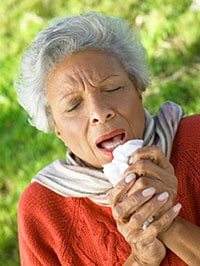Transmission
The main way people spread Streptococcus pneumoniae to others is through direct contact with respiratory droplets. The bacteria often spread within households and in crowded conditions.

Pneumococcal infections are more common during the winter and early spring.
Transmission of Streptococcus pneumoniae occurs through
- Direct person-to-person contact via respiratory droplets
- Autoinoculation in persons carrying the bacteria in their upper respiratory tract
The pneumococcal serotypes most often responsible for causing infection are those most frequently found in carriers. Although carriage does not necessarily lead to disease, it is an important precursor for pneumococcal disease.
The following factors influence the spread of the organism within a family or household:
- Crowding
- Season
- Presence of upper respiratory infections or pneumococcal disease, such as pneumonia or otitis media
Temporal pattern
Pneumococcal infections are more common during the winter and in early spring when respiratory diseases are more prevalent.
Communicability
The period of communicability for pneumococcal disease is unknown. Presumably, transmission can occur as long as the organism appears in respiratory secretions.